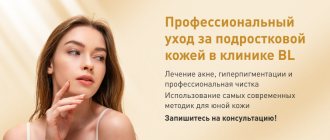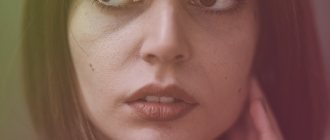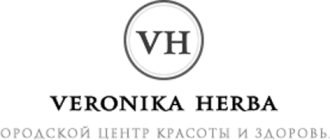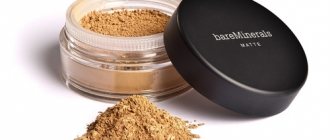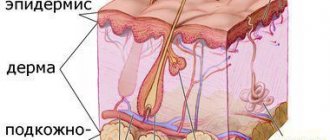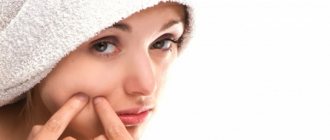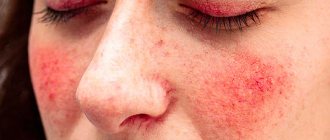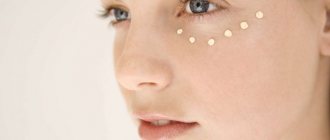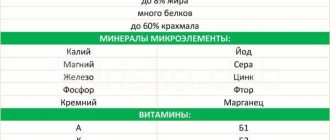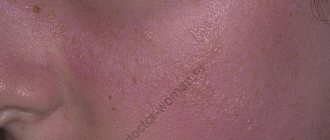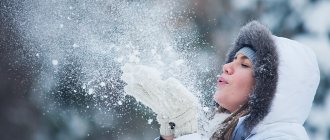Only 20 percent of schoolchildren can boast of healthy facial skin, the remaining 80 are forced to hide their hated acne behind long bangs and under a thick layer of foundation. How to get rid of acne? Let's talk to an expert.
Alim Khakuashev
Alim Khakuashev Dermatologist, cosmetologist, trichologist at the clinic for children and adolescents “SM-Doctor”
With the onset of adolescence, hormonal changes in the body begin. Testosterone is to blame for everything, the level of which affects the function of the sebaceous glands. During puberty, their function increases, resulting in acne. If a bacterial infection occurs, pustules will develop.
At 13-14 years old, black spots and red inflammation on the forehead and cheeks become the number one problem. The child looks at himself in the mirror with horror. No amount of persuasion and examples from stars (Cameron Diaz, Victoria Beckham, Rihanna) whose skin is far from ideal helps.
“Acne means endless ridicule from classmates,” says the mother of a 15-year-old son. — Clean facial skin helps you become more confident and overcome complexes. Unfortunately, there is no such miracle remedy that will get rid of acne once and for all. And dragging a teenager to a cosmetologist is also not easy. I really don’t know what to do.”
Mothers of girls on various forums also constantly discuss such topics. “How to cure these teenage acne? - asks Svetlana, mother of a 12-year-old daughter. — We already had ointments, tinctures, lotions, etc. in our arsenal. So far nothing has helped overcome this trouble. Grandmothers believe that in a couple of years everything will go away on its own, but I’m not sure.”
The cosmetologist warns that acne will not disappear on its own: “If you have facial skin imperfections, you need to contact a specialist as early as possible so as not to start the problem and take the necessary measures in a timely manner. Often, children and adolescents are embarrassed to see a doctor themselves or, due to their age, inadequately assess the severity of the disease. Therefore, parents should carefully monitor the condition of the child’s facial skin and, if necessary, immediately sound the alarm.”
Causes of acne in children and adolescents
Pimples occur when pores become clogged. What type of acne occurs depends on what is clogging the pores. Although scientists are still trying to figure out why some people's skin is more prone to developing acne, it's likely that hormones play a role. This explains why acne is so common among teenagers.
During puberty, hormones called androgens increase the size of the skin's oil glands. These glands begin to produce more sebum, which can clog your pores.
But acne can start before (or after) adolescence. About 20% of newborns suffer from neonatal acne, which usually appears between the second and fourth weeks of life. This type of acne goes away on its own without leaving any scars. It also does not increase the risk of developing severe acne later in life.
Some children develop infantile acne, which appears between 3 and 6 months of age. Baby acne can cause deep nodules and cysts, leading to permanent acne scarring. Fortunately, childhood acne is rare. Source: Modern concept of the etiopathogenesis of acne vulgaris. Isaeva M.S., Burieva Z.T. Avicenna Bulletin, 2010. p. 127-132 Pathogenetic approaches to the treatment of acne vulgaris. Khaldin A.A., Mareeva E.B., Skvortsova A.I. Russian Journal of Skin and Venereal Diseases, 2012. p. 34-37.
Folk remedies
It is possible to treat acne in teenage boys, if the rash is not complicated by purulent inflammation and has limited localization, using folk remedies. Over the centuries of existence of the problem, alternative medicine has developed a whole arsenal of anti-acne recipes.
For washing, you can offer the young man a decoction of chamomile or a decoction of mint leaves once a day. These products not only have natural anti-inflammatory properties, but also soften and soothe irritated skin. If the skin is oily, the boy has a tendency to form wen and so-called blackheads, then lemon juice will benefit him. If freshly squeezed juice is applied to the skin of the face once a day and washed off with cool water after half an hour, the effect of such procedures can appear within 2-3 weeks.
You can treat pustular acne with aloe juice. This plant can be found without problems on almost every windowsill in Russian apartments. A prerequisite is not to store the plant juice, but to squeeze fresh juice each time before use.
A curd mask helps get rid of clogging of pores with subcutaneous fat. It requires the most ordinary cottage cheese (crumbly, not curd mass). It is mixed with a raw egg and applied to the face for 15-20 minutes. Cottage cheese “pulls out” most blackheads. For masks, you can use honey, if the young man is not allergic to it, as well as a mass obtained from crushed viburnum and cranberries. It should be remembered that all masks are washed off exclusively with warm or cool water.
If acne is widespread not only on the face, but also on the body, then it is advisable for the young man to add a decoction of celandine, chamomile, and string to the bath water.
What causes acne and what causes it
While stress may not cause acne, it can make existing acne worse. Research shows that when stress increases, the severity of acne increases. Acne may get worse if teens:
- sleep too little;
- eat certain foods traditional to the Western diet;
- use oily cosmetics and skin care products.
Almost everyone experiences at least a few breakouts during their teenage years. It is impossible to predict who will develop more severe acne, but there is an increased risk if one or both parents (or other close blood relatives) have had severe acne that results in scarring.
Pimples* on the chin: causes
There are quite a few reasons why acne* appears on the chin, and it is difficult to understand them without the help of a specialist. Sometimes laboratory tests are required to find out what exactly caused the rash. The most common causes of acne* in the chin area are [29, 50, 4]:
- hormonal disorders;
- poor nutrition;
- frequent stress, constant emotional stress;
- improper personal hygiene (lack or excess), use of low-quality, comedogenic cosmetics;
- hereditary factors;
- diseases of internal organs (for example, problems with the gastrointestinal tract, genitourinary, endocrine systems);
- mechanical impact (pressure, rubbing).
The habit of constantly touching your face with your hands and using dirty cosmetics can also cause acne.
Pimples* on the chin: which organ may not be working properly?
There is a theory that the location of the rash on the face is associated with disturbances in the functioning of a particular organ. Here are the problems, according to her, that rashes in the chin area indicate [208]:
- hormonal disorders, high levels of male hormones (in women);
- diseases or congestion in the pelvis;
- prostatitis;
- diseases of the endocrine system;
- frequent stress.
There are no scientific studies on how acne* on the chin is related to organs. Therefore, it cannot be said that rashes are a sign of disturbances in the functioning of specific organs or internal systems of the body.
Types of acne, formation mechanism and what they look like
Teenage acne on the face of adolescents can be of several types (or a combination of them). Source: Pathogenetic rationale for local acne therapy in adolescence. Mazitova L.P., Aslamazyan L.K., Kvachakhiya L.L., Namazova L.S. Pediatric pharmacology, 2008. pp. 94-97):
- whiteheads;
- black dots;
- acne;
- nodules, cysts, or both (deep and painful).
- Whiteheads . Removing whiteheads can lead to more whiteheads and acne scars, which is why dermatologists recommend treating whiteheads with an acne treatment rather than picking at them. Whiteheads form when excess oil and dead skin cells clog the pores. This causes white or flesh-colored pimples to appear. Medical name: closed comedon, which means “closed pore.”
- Black dots . Dermatologists recommend treating this type of acne with a retinoid, since squeezing the blackheads can cause infection or permanent scarring. This type of acne also develops when excess sebum and dead skin cells accumulate inside the pore. As the secretion accumulates, it expands the pores and you see blackheads. Many people mistakenly believe that a black spot is dirt. What you are actually seeing is a chemical reaction. When deposits inside the pore react with oxygen in the air, a black color appears. Medical name: open comedo, which means “open pore.”
- Sometimes excess oil, dead skin cells and bacteria get trapped in the pores. Bacteria, which are usually found on our skin, can multiply quickly in excess oil. As the pores become filled with bacteria, inflammation (swelling) develops and a pimple appears. Medical name: If a pimple contains pus, it is called a pustule . A pimple without pus is called a papule .
- Nodule or cyst . When the pores become filled with excess oil, dead skin cells and bacteria, causing inflammation (swelling) that penetrates deep into the skin, a lump or cyst forms. Because these rashes penetrate deep into the skin, they can be painful. The main difference between a nodule and a cyst is that the cyst contains pus. Because nodules do not contain pus, they feel firmer to the touch than cysts.
How is this treated?
Traditional drug treatment includes the use of topical ointments as prescribed by a doctor, along with oral antibiotic therapy or internal medications.
External therapy most often involves the use of retinoid ointments, which reduce inflammation and help exfoliate the top layer of skin. Topical ointments can be used without a prescription. These drugs contain a small amount of active substance and are therefore safe.
In addition to medical attention, it is important to remember that acne develops in moist areas of the skin, so maintaining proper hygiene is important. Timely and thorough cleansing of the skin can significantly reduce inflammatory processes. It is important to give preference to the prescribed care products and not to rub or scratch the wounds, as this will cause additional irritation and worsen the inflammatory process.
You can use drugs with antibacterial action that will help eliminate the inflammatory reaction. You should never squeeze the blackheads because this will spread the bacterial infection and may also cause scarring on the skin.
Extra hydration and protection
Many people make the mistake of thinking that acne-prone skin does not need additional moisturizing. The truth is that adjusting your moisturizing emulsion can help balance sebum production throughout the day. Moisturizing emulsions are easily absorbed, helping to balance moisture levels and prevent aggravation or irritation.
Skin affected by acne needs constant protection from solar radiation, since exposure to direct ultraviolet rays promotes the secretion of sebum. You need to choose sunscreen according to your age and skin type. It is recommended to give preference to products that do not contain parabens.
Nutrition and lifestyle
Lifestyle also influences acne. Diet, stress and hours of sleep also negatively affect the condition of the skin. It used to be that certain foods contributed to acne. Today, a personalized diet is being promoted:
- It is recommended to reduce the consumption of sweet or spicy foods;
- reducing foods that are not beneficial mitigates damage.
In addition to dietary recommendations, you should also use Omega-3 supplements. These are polyunsaturated fatty acids that the body cannot produce on its own, and they are found in sea fish oil or plant products. Their presence will help mitigate inflammatory processes in the body, which means it will have a beneficial effect on all skin diseases and acne in particular.
Consequences of acne
Acne can cause more than just rashes. Some people believe that acne is a skin condition that eventually outgrows, but it can have a profound and lasting impact on one's life. Many people experience one or more of the following after acne appears.
Acne scars: When the breakout goes away, it leaves behind a permanent scar. Some scars cause indentations in the skin. The rest are gradually disappearing. It's impossible to predict who will develop scars after their acne goes away, but the following factors increase your risk:
- acne has been present for a long time because the teenager does not treat it or the treatment does not work;
- One or more close blood relatives have had acne in the family.
Dark spots on the skin: As acne breakouts fade, some people see the area where acne once was. This completely flat spot can be pink, red, purple, black or brown, and is often mistaken for a permanent acne scar. Source: Modern Treatments and Rehabilitation of Acne Vulgaris. Barinova A.N. Russian family doctor, 2022. p. 5-18.
Laser Freckle Removal
Not everyone likes pigmentation on the face - many teenagers, especially those with red hair, have a complex about freckles.
And if it is almost impossible to remove freckles at home, traditional methods in this matter are not very effective, but with the help of a modern laser you can get rid of them forever. Laser freckle removal usually takes place without anesthesia, and the procedure itself takes very little time. Of course, everything is individual and depends on the number of pigment spots. The advantages of laser freckle removal are:
- speed and comfort;
- no risk of scarring;
- no rehabilitation period.
Diagnostics
If your teen has acne, a dermatologist can diagnose acne by looking at the breakouts. During your appointment, your dermatologist will also note what types of acne they are and where the breakouts appear on the skin. This will help your dermatologist create an effective treatment plan. Sometimes what looks like pimples is another problem. For example, some people mistake hidradenitis suppurativa, also called acneinversa, for everyday acne. Treatment for this condition is different from that for acne. Another disease that can be mistaken for acne is perioral dermatitis. This often causes rashes that look like pimples around the mouth. Whether your teen has stubborn acne or another condition, a dermatologist can accurately diagnose acne vulgaris and create a treatment plan tailored to your teen's needs.
Types and stages of acne
There are 4 degrees of severity of acne:
- First. There are no inflammations or pustules yet, but there are closed comedones in the form of white rashes.
- Second. Open comedones, i.e. blackheads, also appear. Against their background, you can notice inflamed lumps and isolated pustules. Their number already exceeds 20 elements.
- Third. The number of inflamed elements and pustules reaches 40 pieces.
- Fourth. There are very large lumps and nodules on the skin, many ulcers, more than 40 pieces.
Treatment of facial acne in teenagers
The appropriate acne treatment plan depends on many factors, including:
- type of acne;
- where acne appears on the skin;
- what treatments have already been tried;
- when the rash started;
- age;
- whether acne left dark spots or scars Source: Modern methods of treating acne in children. Nosacheva O.A., Torshkhoeva R.M., Namazova-Baranova L.S. Pediatric pharmacology, 2013. p. 23-30.
Your treatment plan may vary. But there are a number of drugs that are included in clinical guidelines for the treatment of acne. Effective treatment for facial acne in a teen may include retinoid medications, benzoyl peroxide, azelaic acid, or salicylic acid. An antibiotic may be prescribed and applied to the skin.
Nodules and cysts are more difficult to treat. Treatment may consist of prescription medications applied to the skin, antibiotics, and isotretinoin (a medication approved for the treatment of severe acne).
Sometimes additional laser or light therapy is needed: Research shows that laser and light devices can help clear up acne. This type of treatment works best in combination with other acne treatments.
Healthy Diet: Some studies show that eating a healthy diet can also help give you clearer skin.
Skin care is so important that without it you won't get the results you want. Even if you use an acne treatment correctly, if teens are too rough on their skin, new breakouts may appearSource: Combination Acne Therapy. Mamarasulov D.I., Yuldashev M.A., Moon A.V., Ismoilov B.B. Medicine: theory and practice, 2019. p. 342-343.
Acne treatment
The cosmetologist will decide whether interventions are needed at all. Most often, after a survey and examination, recommendations are given on a home care system, and external medicinal products may be prescribed.
Most teenagers need a facial to remove blockages during periods of skin problems. Superficial peelings and physiotherapy are often included. Everything is individual.
To say that teenage acne can be dealt with only through a system of care and procedures is, of course, wrong. There are many factors - nutrition, lifestyle, heredity, internal diseases. In some cases, a dermatologist-cosmetologist can cope on his own; in others, consultations with specialists may be required: a gynecologist-endocrinologist, an immunologist, a gastroenterologist.
Prevention
Do not wash your face with soap or use rough scrubs too often. Acne is not caused by dirt. Two gentle washes a day are enough. Exfoliating your skin too often can cause irritation and dryness of the skin, which causes the glands to produce more oil, which increases the likelihood of acne.
Use non-comedogenic products (those that do not clog pores) on your face.
Do not press on the spots, as this can drive bacteria deeper into the skin. This can lead to more inflammation and permanent scarring.
Sources:
- Modern concept of etiopathogenesis of acne vulgaris. Isaeva M.S., Burieva Z.T. Avicenna Bulletin, 2010. p. 127-132
- Pathogenetic approaches to the treatment of acne vulgaris. Khaldin A.A., Mareeva E.B., Skvortsova A.I. Russian Journal of Skin and Venereal Diseases, 2012. p. 34-37
- Modern methods of treatment and rehabilitation of patients with acne vulgaris. Barinova A.N. Russian family doctor, 2022. p. 5-18
- Pathogenetic rationale for local therapy for acne in adolescence. Mazitova L.P., Aslamazyan L.K., Kvachakhiya L.L., Namazova L.S. Pediatric pharmacology, 2008. p. 94-97
- Modern methods of treating acne in children. Nosacheva O.A., Torshkhoeva R.M., Namazova-Baranova L.S. Pediatric pharmacology, 2013. p. 23-30
- Combination therapy for acne. Mamarasulov D.I., Yuldashev M.A., Moon A.V., Ismoilov B.B. Medicine: theory and practice, 2022. p. 342-343
The information in this article is provided for reference purposes and does not replace advice from a qualified professional. Don't self-medicate! At the first signs of illness, you should consult a doctor.
Is it possible to cure acne at home?
Perhaps you are now making a decision whether to intervene in this teenage skin process or observe from the sidelines, or maybe you still have yet to decide. Remember: the more pronounced the inflammation and the longer the skin suffers from it, the less chance there is of smooth relief in the future. Of course, beauty is not happiness, but judging by the thousands of patients who annually seek acne treatment and removal of traces of youth from the face, it is not happiness either.
You won’t be able to cope with the growing inflammation yourself, just as you won’t be able to predict what will remain on the child’s face after it. A competent doctor is a necessary link here.
Some parents have to carefully monitor the implementation of the recommendations, others do not, but when the face begins to clear up, there are no limits to happiness. It’s simply amazing how a child who was initially distrustful and silent at the first appointment suddenly smiles at you and happily tells you about the first results.
Prices
| Name of service (price list incomplete) | Price |
| Appointment (examination, consultation) with a dermatovenerologist, primary, therapeutic and diagnostic, outpatient | 1750 rub. |
| Consultation (interpretation) with analyzes from third parties | 2250 rub. |
| Prescription of treatment regimen (for up to 1 month) | 1800 rub. |
| Prescription of treatment regimen (for a period of 1 month) | 2700 rub. |
| Consultation with a candidate of medical sciences | 2500 rub. |
| Dermatoscopy 1 element | 700 rub. |
| Setting up functional tests | 190 rub. |
| Excision/removal of cutaneous/subcutaneous elements and formations (1 element) | 2550 rub. |
| Removal of milia of one unit using electrocoagulation | 350 rub. |
Advantages of children's and adolescent cosmetology at SM-Doctor
- "SM-Doctor" is a large medical center that employs highly qualified doctors - dermatocosmetologists
- We comprehensively solve cosmetic problems, assessing the general health of the patient
- You can get advice from related specialists - endocrinologist, immunologist, psychologist and other doctors - for quick and effective treatment
- We offer an individual and sensitive approach to the problems of young patients related to their appearance, so as not to create additional psychological problems
Your child no longer has to worry about their appearance and non-working cosmetics advertised on TV.
Consultation with a qualified pediatric cosmetologist is the first step towards healthy and attractive skin. Make an appointment
You can make an appointment or ask questions around the clock by calling +7 (495) 292-59-86
What services do we offer to young patients?
Cosmetology for teenagers differs from cosmetology for adults - both the set of procedures and the cosmetics used will be different. The pediatrician takes into account the age characteristics of his patients, selects a treatment and care regimen depending on the skin type and the nature of the problems.
The range of services includes:
- acne treatment;
- office cleaning;
- laser pigmentation removal;
- moisturizing masks;
- light peeling.
